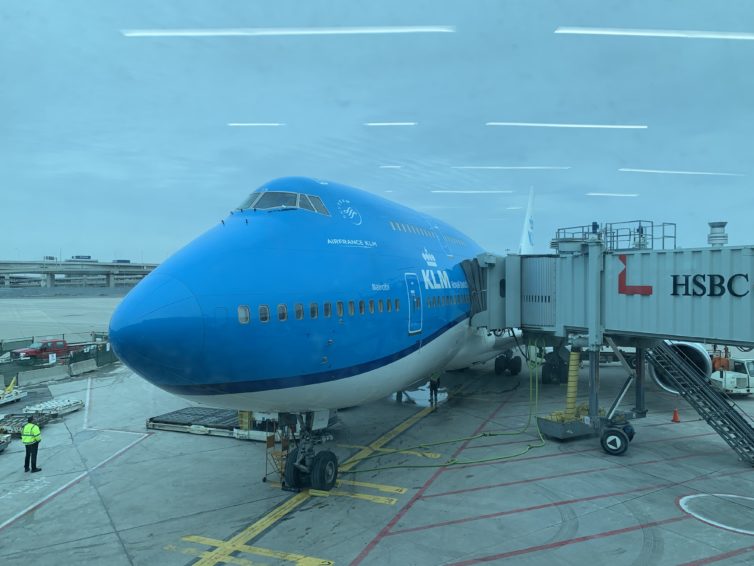
The KLM 747-400 City of Nairobi sitting at the gate in Toronto. A sight that, not long after my flight, was no more – Photo: Matthew Chasmar
How does one get to Rwanda, anyways? This is probably not a question many North Americans have asked themselves. But it is one I heard a lot recently, when I had an unprecedented opportunity to travel to the East African country of Rwanda. This was an incredibly unique experience in many ways, and the flights involved were no exception. For this trip, I flew from Toronto to Kigali (Rwanda’s capital city), via Amsterdam on KLM Royal Dutch Airlines. This is one of only a handful of options for that particular trip, the others being Brussels and Turkish Airlines. So, this February, I found myself at Toronto’s Pearson International Airport, ready to embark on one of the longest series of flights I’ve ever taken.
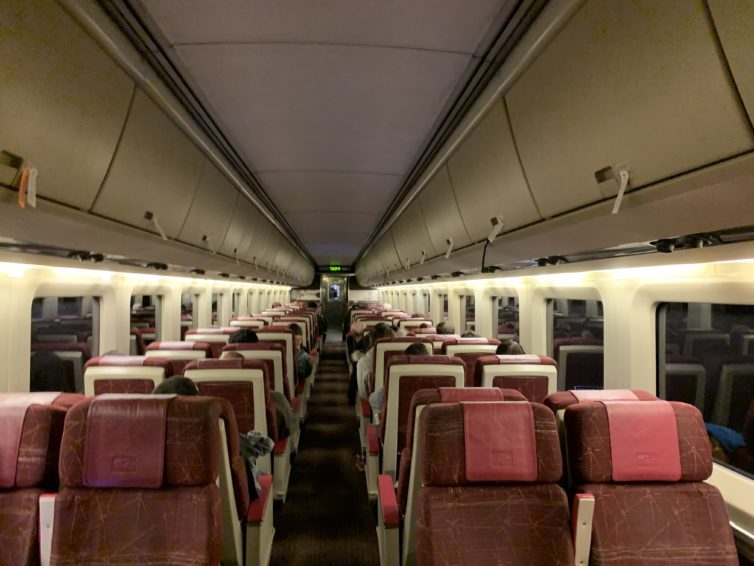
That’s no plane! The first leg of my journey was a train ride into Toronto – Photo: Matthew Chasmar
A while back I got to fly in KLM’s World Business Class on one of their new Boeing 787-9 Dreamliners. That flight was from San Francisco to KLM’s HQ hub in Amsterdam, and from there I connected onwards on another Dreamliner to Brazil. I took some photos and videos from that second flight and wanted to let them speak for themselves.
But actually.
Once you start the story below, no more words from me. If you want the lowdown on the seat and service, head to that trip report from my SFO–>AMS flight. Otherwise read on for the photo and video highlights from my long-haul flight in KLM’s flagship premium product. And don’t forget: if you’re an audiovisual sort of person, subscribe to our YouTube channel.
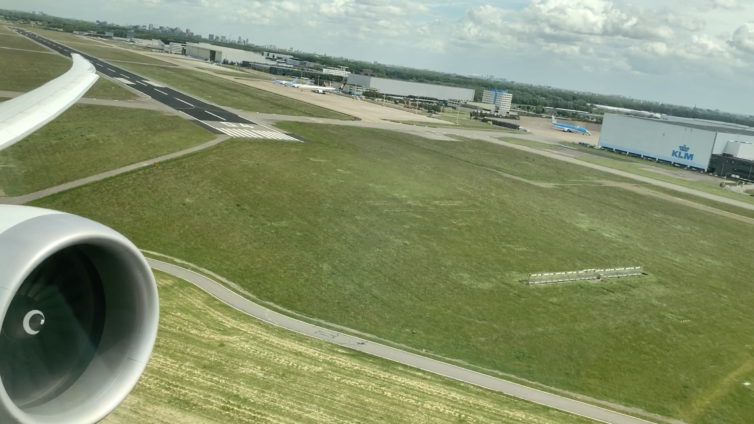
Founded in 1919, KLM is actually the world’s oldest airline still flying under its original name. How do you keep an airline with that long of a history feeling fresh? New planes definitely help, and for KLM’s long-haul fleet the freshest faces are its 787 Dreamliners.
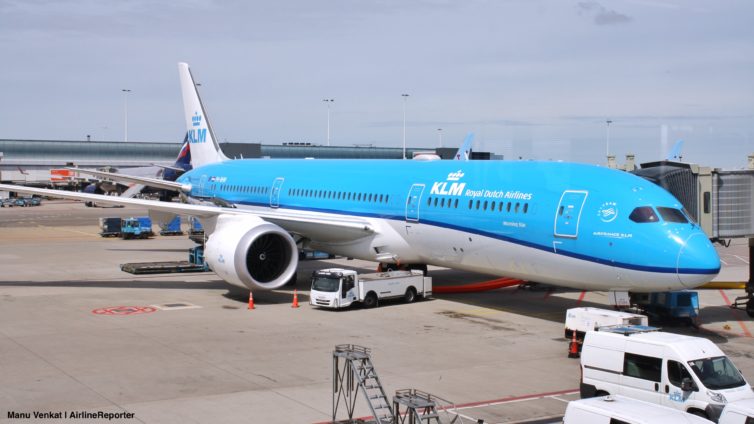
Since joining the fleet a few years ago, the 787-9 has been KLM’s pride and joy. One of my very first AirlineReporter stories was a KLM pop-up exhibit in San Francisco back in 2016. Both then and now, folks at the airline are super proud of the Dreamliner fleet and its newest-generation onboard product. A few months ago, I scored a great deal on an award ticket from San Francisco to Amsterdam and on to Rio, and I’d get to try KLM’s long-haul Dreamliner service along the way. And it ended up being one of the best international business class experiences I’ve had.
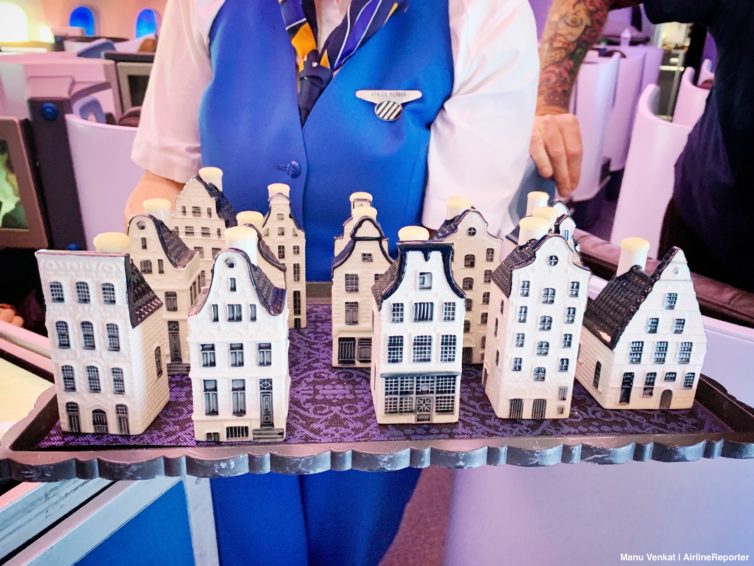
For more of the highlights — from gin-filled ceramic houses and fancy Dutch glassware, to bubbly flight attendants and incredible views of that Dreamliner wing flex — keep on reading!
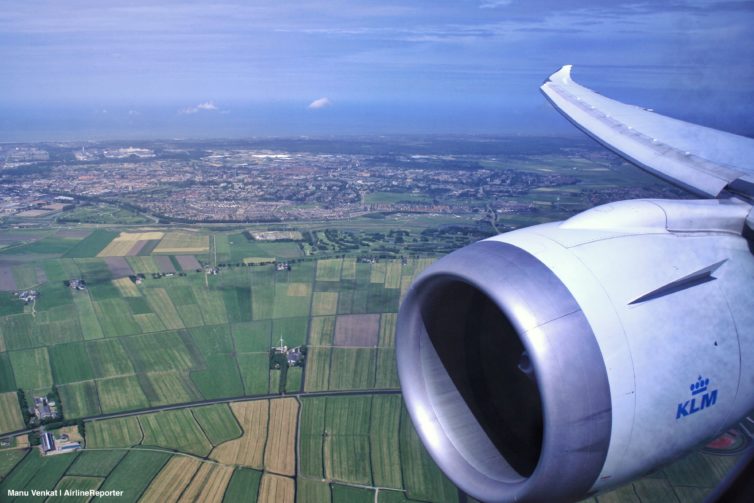
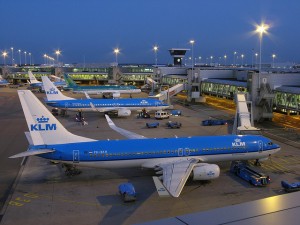
Aircraft lined at up Schophol Airport (AMS) in Amsterdam
Amsterdam’s Schiphol Airport (AMS) is the 5th largest airport in Europe and the 15th largest in the world. Already the airport is busy and they only expect it get busier. The problem is there isn’t a whole lot more room to expand the airport and one of the biggest challenges is handling all the luggage. Since they can’t grow bigger, they have had to grown smarter. The airport has been working with IBM to create a futuristic way to handle bags.
The system is housed at the new South Baggage Hall where they hope to increase bag capacity by 40% before 2018. The new system is important, ’œto create an efficient, reliable and fast baggage handling process,’ said Mark Lakerveld, Senior Manager Baggage at Amsterdam Schiphol Airport.
No matter where your bag might be in the 13 miles of conveyor system or 4,000 bag positions, the new system can track exactly where it is at. The new baggage operation has 36 cranes and 60% will be handled by robots (yes, robots). After you check in, your bag will be placed into the bag storage. Then a robot will take your bag when needed and place it on the conveyor belt, reducing overload in the system. The new luggage process is connected to real-time flight information, meaning your bag will only be pulled when your plane is ready for it.
Is this the future of airport baggage systems? Possibly. When asked if we might be seeing this system at other airports, IBM spokesperson stated, “There are a couple of similar efforts that are happening internationally that can’t be named specifically. This example is indicative of what is beginning to happen and we will see more of in airports across the world — focusing on being smarter about how they utilize the space that they have.”
Although great on paper, let’s how this is not a repeat of Denver International Airport (DEN) attempted at a similar high-tech airport luggage system in the early 1990s. Let’s hope that Schiphol has a little better luck.
Check out this video from IBM on how the system works.






